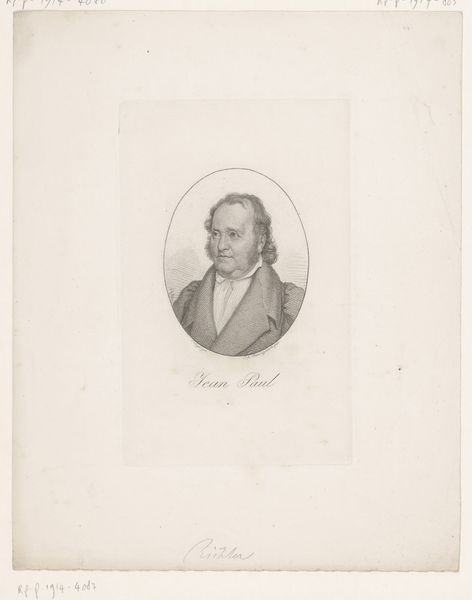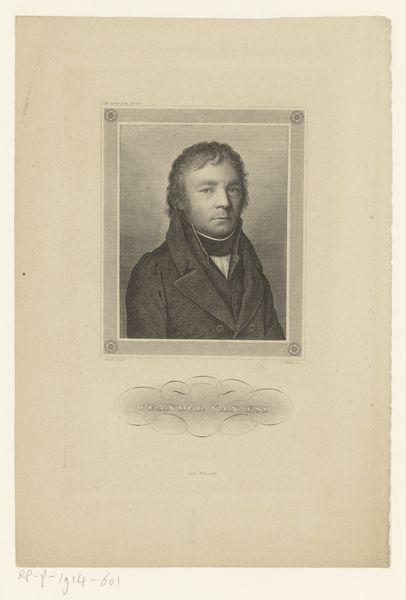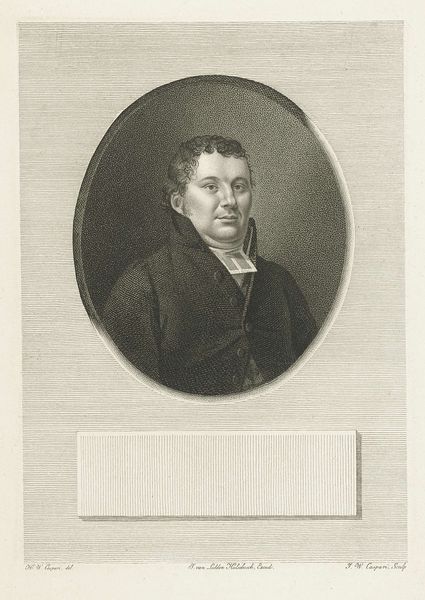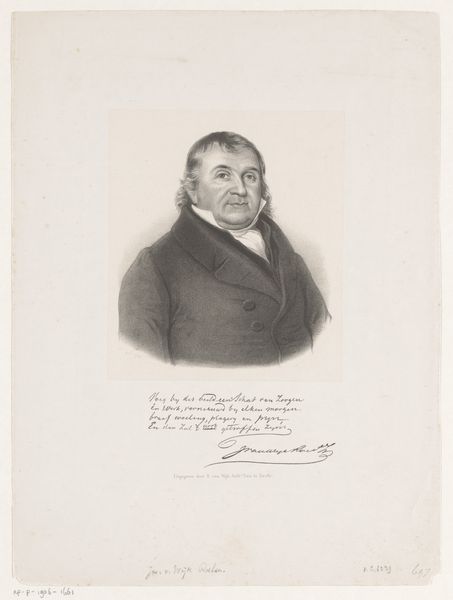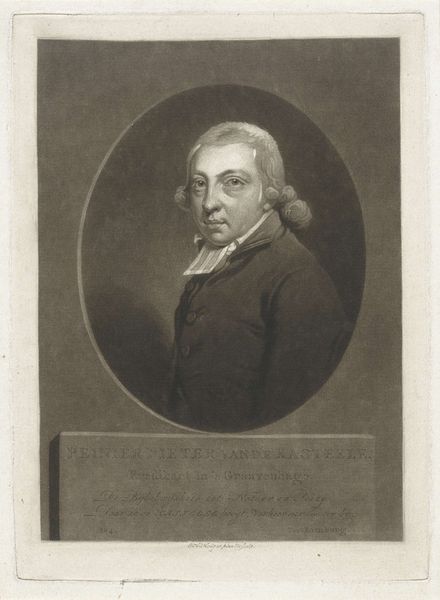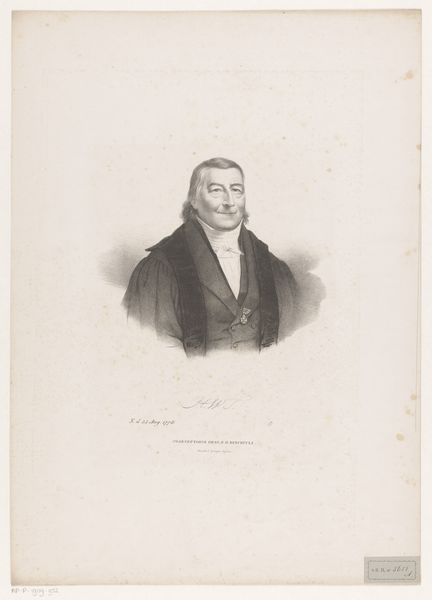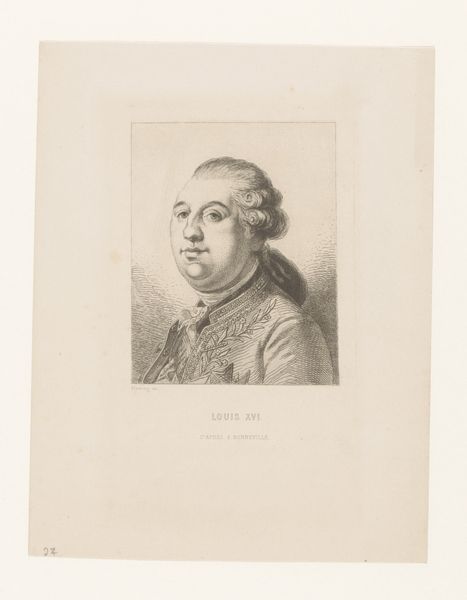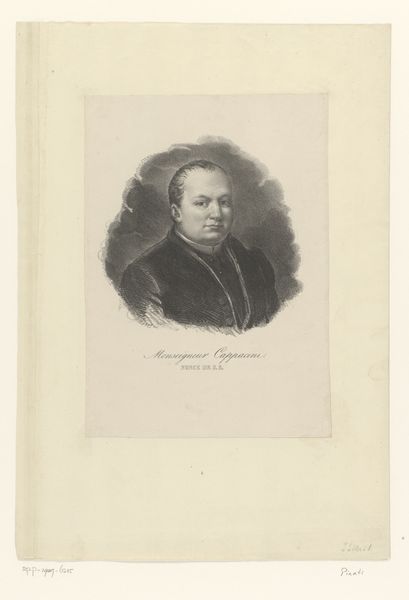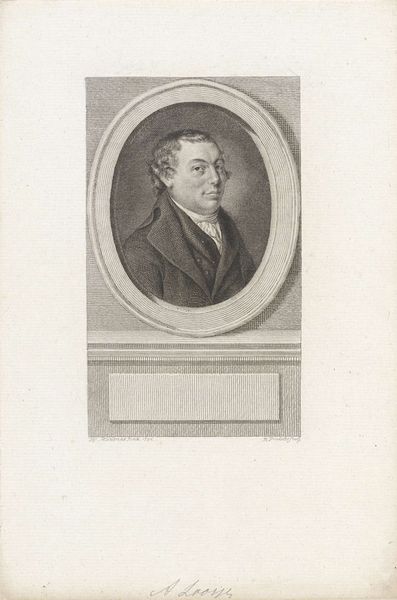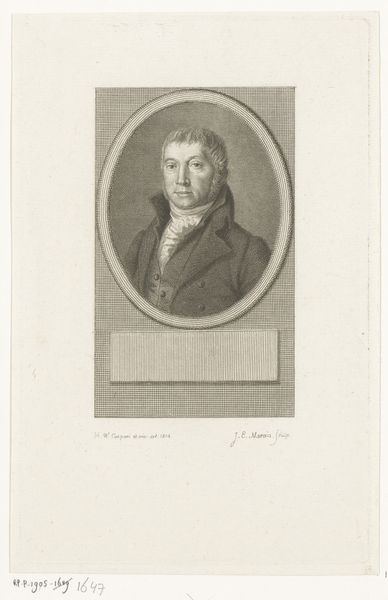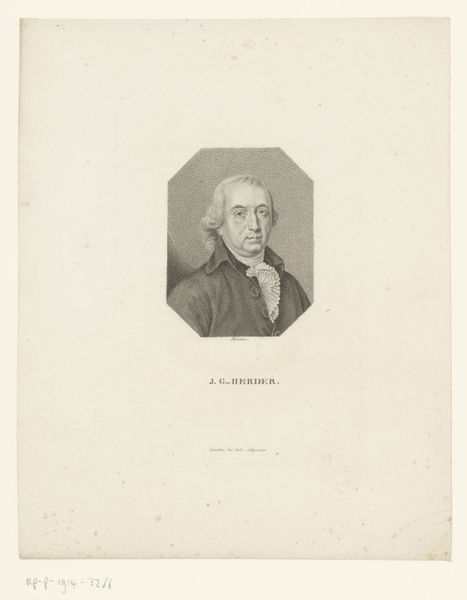
print, engraving
#
portrait
# print
#
engraving
#
realism
Dimensions: height 268 mm, width 229 mm, height 482 mm, width 353 mm
Copyright: Rijks Museum: Open Domain
Curator: Here we have Jacob Plügger's 1836 engraving, “Portret van Jacobus van Wijk Roelandszoon,” a striking piece currently housed at the Rijksmuseum. Editor: My initial reaction is that it is rather imposing; there's a certain weightiness in the subject’s gaze, a sort of bourgeois solidity rendered beautifully in monochrome. The tight oval framing adds to that intensity. Curator: Yes, that framing serves almost as a visual symbol of societal expectation during that era, an era emphasizing stability, accomplishment, and defined roles, the very pillars that defined Roelandszoon’s status as an entrepreneur, I imagine. The rendering of the gaze you mentioned makes me think of Roman portraiture. Editor: Exactly. I think that understanding the historic social cues becomes an exercise in understanding its relationship to the male gaze of the period. It’s impossible to extract an image of a man from this era from these social frameworks. Can you speak about his representation as a public figure and his connection to politics at the time? Curator: Sadly, I do not have that information readily available, though I can comment on Plügger's commitment to a kind of hyperrealism; every button, fold, and shadow on the face speaks to an almost academic desire for accuracy. Look at how light defines the contours of his jaw. Editor: Yet, doesn't that realism mask a selective portrayal? The focus is so centered on authority. What does the sitter conceal behind this curated image? Curator: That question strikes at the heart of portraiture’s complexity. What is included, what is left out, what symbolic meanings the subject would’ve tried to convey or suppress. Editor: For me, it's a study in the careful construction of identity. We interpret visual clues to infer history. A fascinating tension between presence and absence, then. Curator: Precisely. Thank you for prompting this enlightening reading.
Comments
No comments
Be the first to comment and join the conversation on the ultimate creative platform.
